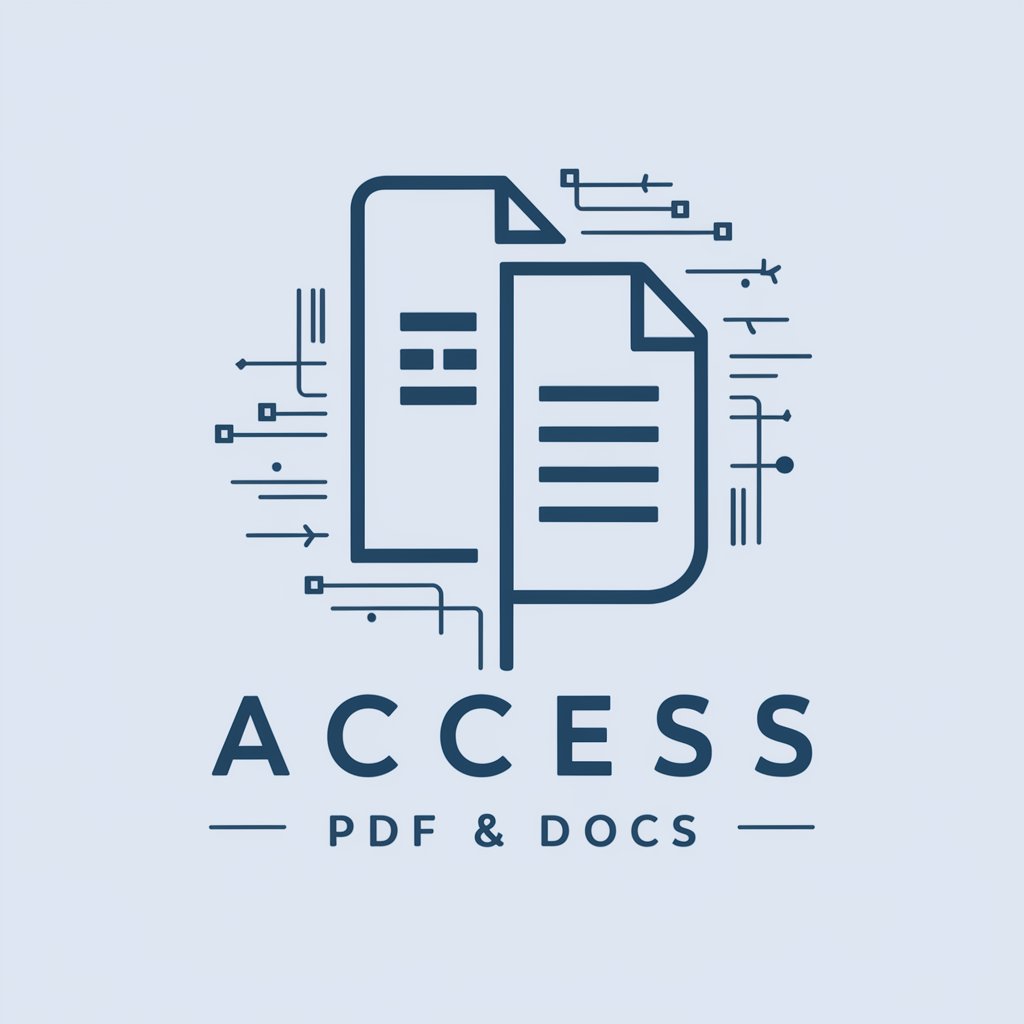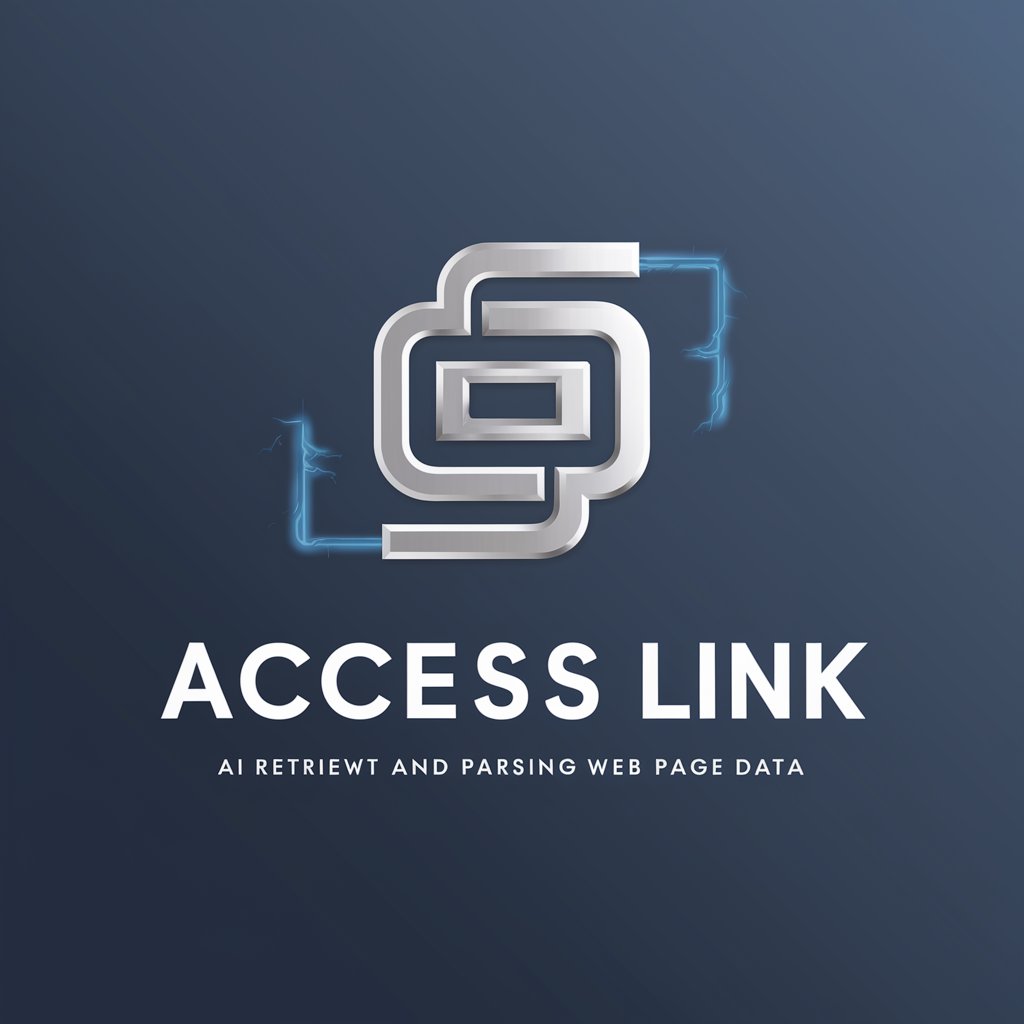
Access PDF & Docs - PDF Data Analysis & Extraction

Welcome! How can I assist with your PDF and document needs today?
Unlock PDF insights with AI power
Analyze the content of this PDF file...
Summarize the key points from the document located at...
Extract important data from the following URL...
Provide a detailed overview of the information in this PDF...
Get Embed Code
Introduction to Access PDF & Docs
Access PDF & Docs is a specialized tool designed to interact with PDF documents and web pages. Its core purpose is to extract and interpret data from PDFs and certain web content, providing users with the ability to access and analyze this information efficiently. For example, if a user needs to extract text from a PDF for a research project or wants to pull data from an online report, Access PDF & Docs can process the content and present the information in an accessible format. Powered by ChatGPT-4o。

Main Functions of Access PDF & Docs
PDF Content Extraction
Example
Extracting text from a research paper PDF for citation or review.
Scenario
A student uses Access PDF & Docs to pull quotes from a digital research paper, enabling them to easily incorporate this information into their own study without manually typing out extensive excerpts.
Web Content Parsing
Example
Retrieving data from an online financial report.
Scenario
An analyst uses Access PDF & Docs to extract specific financial data from an online annual report, which they then use to perform a comparative analysis with other companies in the sector.
Ideal Users of Access PDF & Docs
Students and Academics
These users benefit from Access PDF & Docs by efficiently extracting data and text from academic papers and resources, facilitating research and study without manual data entry.
Professionals and Analysts
This group benefits from the tool's ability to parse and extract key information from professional reports and documents, aiding in data analysis and decision-making processes.

How to Use Access PDF & Docs
1
Start by visiting yeschat.ai to explore Access PDF & Docs capabilities with a free trial, no login or ChatGPT Plus subscription required.
2
Provide the URL of the PDF document you need to analyze or extract data from.
3
Use the Access PDF & Docs plugin to parse the content of the PDF. Specify if you're looking for text extraction, data analysis, or both.
4
Review the extracted data or analysis results. Utilize the output for your specific needs, such as research, data entry, or document management.
5
For an optimal experience, ensure the PDFs are of high quality and text-based. Image-based PDFs may require pre-processing for accurate data extraction.
Try other advanced and practical GPTs
Access Assistant
Empowering your productivity with AI.

Access Compliance
Streamlining Compliance with AI

Draw (Nearly) Something
Unleash Creativity with AI

Try Something New
Discover Daily, Grow Constantly

Something in the Orange
Unraveling Music's Deepest Stories with AI

Learn Something New
Empowering learning through AI

CHECK-EVENT ACCESS ✅
Streamlining Event Planning with AI

Access Link
Unleash web data's potential with AI

Website Builder
Enhance coding with AI-powered insights

Website builder
Build Your Vision with AI

Full HTML Website Builder
Streamline Your Web Development with AI

Hostinger Website Builder GPT
Empower Your Web Presence with AI

Detailed Q&A about Access PDF & Docs
What types of PDFs can Access PDF & Docs handle?
Access PDF & Docs is designed to work with both text-based and image-based PDFs, although it performs best with high-quality, text-based documents. Image-based documents may need additional OCR (Optical Character Recognition) processing for optimal results.
Can Access PDF & Docs extract data from secured PDFs?
It can handle secured PDFs if the security settings allow for content extraction. For PDFs with strict security settings that prevent extraction, the user may need to obtain the necessary permissions or use a different tool.
How does Access PDF & Docs differ from other PDF extraction tools?
Access PDF & Docs leverages AI-powered algorithms to provide more accurate and efficient data extraction and analysis, especially for complex or large volumes of data. It also integrates seamlessly with yeschat.ai for an enhanced user experience.
Is there a file size limit for PDFs processed by Access PDF & Docs?
While Access PDF & Docs can handle a wide range of file sizes, extremely large PDF files may require more processing time. Users are encouraged to check the tool's guidelines for optimal file sizes to ensure efficient processing.
Can Access PDF & Docs automatically categorize and tag extracted information?
Yes, the tool uses AI to analyze the content of PDFs, allowing it to categorize and tag extracted information for easier navigation and utilization. This feature is particularly useful for research and data analysis tasks.